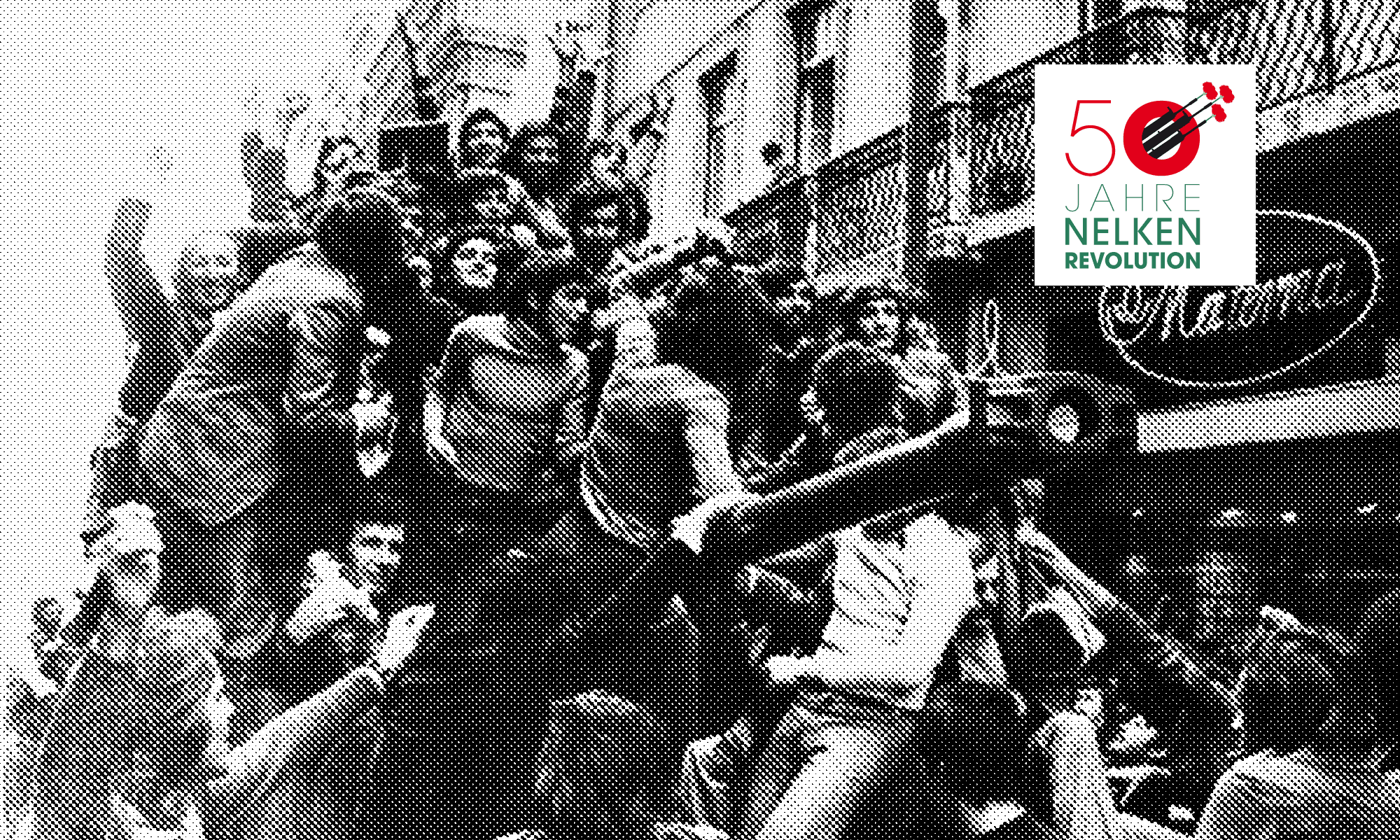On 25 April 1974, the head of the feared secret police PIDE informed Prime Minister Caetano about the anti-fascist coup. The insurgent units of the MFA occupied the government district and strategic points such as radio stations, the airport and public squares.
Caetano abdicated and transferred power to General Spinola, who although belonging to the oligarchy himself, favoured a more moderate form of rule in Portugal and the colonies. The MFA agreed to an alliance of convenience with him in order to bring the coup to a quick and bloodless end.
Fascist functionaries were deposed, political prisoners were freed, residents‘ commissions were elected and exiles returned. The old elites kept quiet, some fled abroad. The USA and NATO backed Spinola and his friends from big business. A constituent assembly was to be elected within a year, followed by a parliament and president. Until then, a provisional government was to run the country.
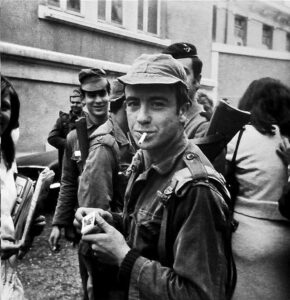
Soldiers of the MFA in Lisbon on 25 April 1974, photograph by Ana Hatherly (1929 – 2015), Portuguese teacher, writer, director and artist.
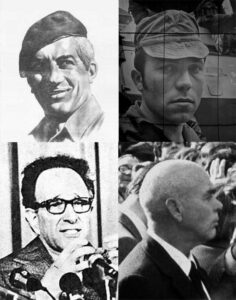
Protagonists of the MFA: Otelo Saraiva de Carvalho (strategist of the coup, left-wing radical), Fernando José Salgueiro Maia (forced the government to abandon its power), Vasco dos Santos Gonçalves (multiple prime minister, close to the PCP), António Rosa Coutinho („Red Admiral“, anti-colonialist).
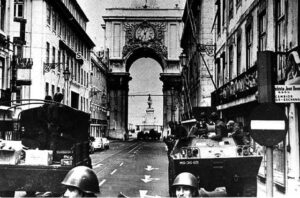
Ordinary soldiers refused to take action against the MFA insurgents. Only the PIDE secret police fired into the crowd from their headquarters, killing four civilians. After a few hours, they surrendered and were arrested, and the PIDE was disbanded.
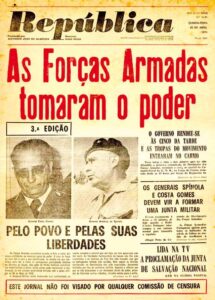
One of the MFA’s first acts was to restore civil liberties such as freedom of the press. Daily newspaper República from 25 April 1974 with the note „This newspaper has not been checked by any censorship commission.“
Images
RitaFMatos, commons.wikimedia.org, 25_de_Abril_de_1974_(1)_-_Fotografia_de_Ana_Hatherly,_patente_no_Museu_do_Aljube_Resistência_e_Liberdade_(Lisboa).jpg), Ausschnitt, CC BY-SA 4.0
Unknown author, commons.wikimedia.org, Otelo_Saraiva_de_Carvalho_Campaign_Poster_1976.jpg, CC BY-SA 1.0
Pedro Ribeiro Simões, commons.wikimedia.org, 25th_April_2014_One_of_the_Captain’s_Hero_(14037306954).jpg), Ausschnitt, CC BY-SA 2.0
Ephemera – Biblioteca e Arquivo de José Pacheco Pereira https://ephemerajpp.files.wordpress.com/2009/05/vasco_autoc_0001.jpg?fit=362%2C478
Henrique Matos, commons.wikimedia.org, Rosa_Coutinho_Henrique_Matos.jpg, CC BY-SA 3.0
http://www.konflictcam.com/photo-report/33/carnation-revolution-portugal-1974
jluismontero.wordpress.com/2011/11/13/entrevista-de-otelo-saraiva-de-carvalho-comandante-do-copcon-na-altura-em-que-se-deu-o-caso-republica/
